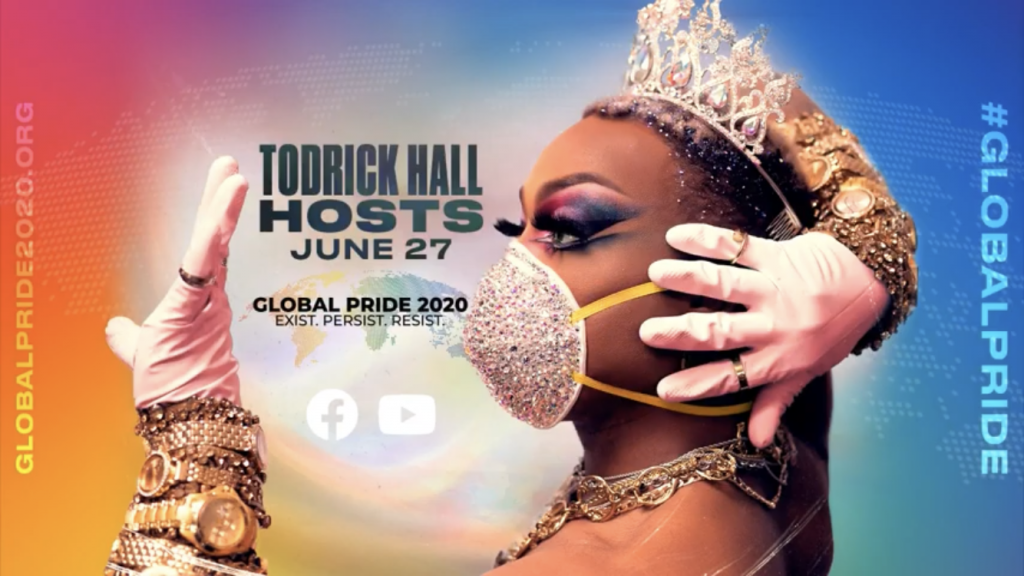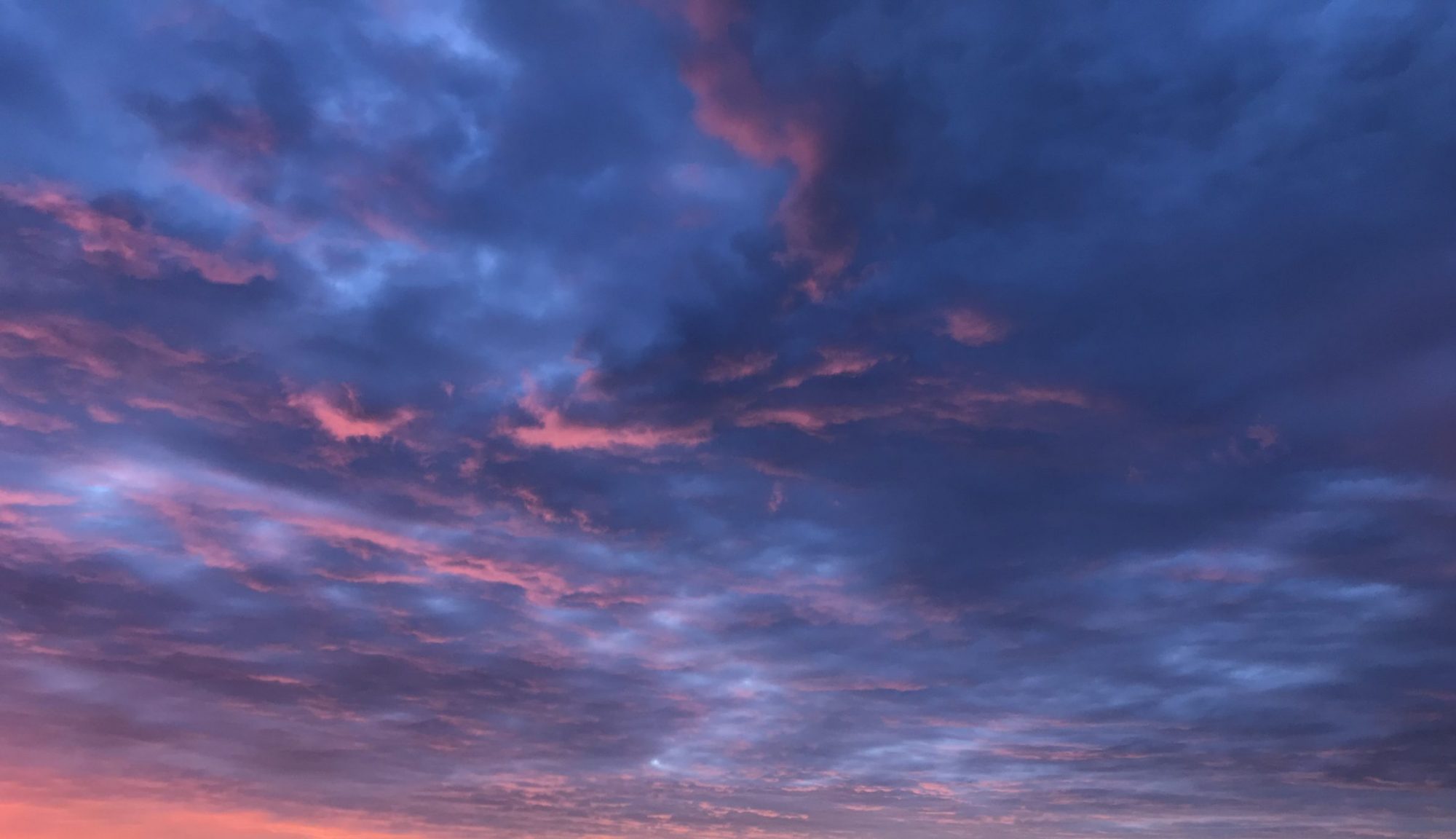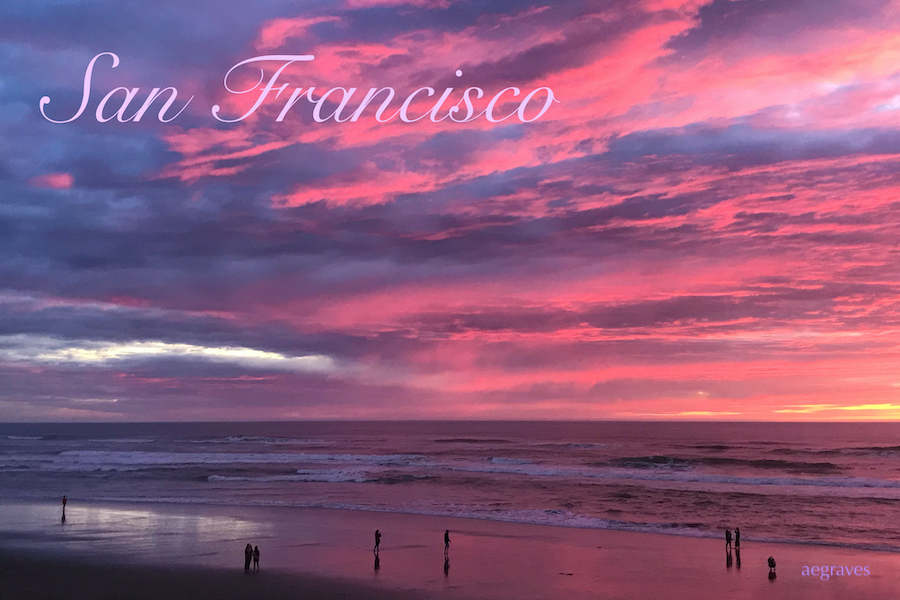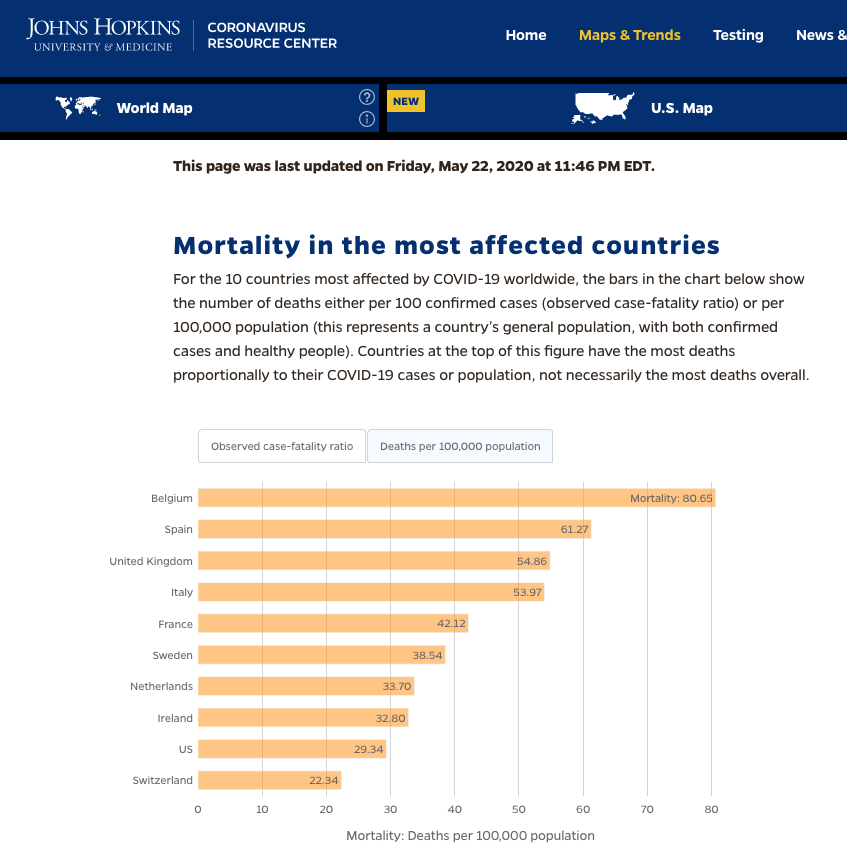We can all use the positivity of PRIDE! The intersectionality, support for BLM, and festivity is truly encouraging.

If you haven’t been watching the Global Pride 2020 live stream, you can find it by clicking on the photo above. (It is delightful!)

Hints on how A.E. Graves spends her imaginary spare time

Just a couple years ago, I was always on a plane, heading east to a meeting on an overnight flight, living out of a suitcase, meeting colleagues for breakfast in airports, and now… my life is completely different . That way of life is no longer possible – and may not be again for YEARS.
HOW IT WAS: After five years of frequent business travel, I joined a company headquartered just six miles from my house (NOT in Switzerland!), with ZERO offices in Europe (though of course, they have one NOW, and I was volun-told to go…), so I could have some semblance of a local life again. Although my two most socially adventurous pals moved full time to SoCal (booooo!), my local habits rebounded: I resumed taking local photographs, eating in local vegan restaurants, visiting the many museums I have memberships at, enjoying strong coffee in pleasant cafes around my hometown, buying books from local bookshops, meeting friends for brunches and hikes, taking long walks to watch the city grow… 11,000 steps per day during my routine errands inserted stealth exercise into my car-free lifestyle, along with the intimacy that walking daily in a place provides.
The way sound travels through fog, the scent of blooming flowers in their peak seasons, the aromas from restaurants, the many languages of conversation – it infuses everything when you are out IN it. My hometown seeped back into me, and kept me delighted to be lucky enough to be here.
THE END OF THE OLD WORLD: My ordinary habits continued until the end of that first week in March, when my employer announced (over a weekend, no less) that we should not go back to the office for at least two weeks, but work remotely and try to stay put to avoid the highly contagious coronavirus. The timing was amusing: my company had held a big party to celebrate a company milestone just DAYS before the precautions began, and so it was almost comical to go from everyone clinking beer steins in one room to being banned from the office in the span of a weekend.
I enjoyed a (fantastic) museum show that final weekend, my last big public event for… well, maybe a long time.
I read news voraciously, and had been following the spread of the SARS-CoV-2 pandemic. I was expecting it to arrive, and the quarantines in Asia were underway long before we started ours. When a colleague suggested postponing a meeting until after the two week initial precaution period, I told them not to count on returning anytime soon: by then, real restrictions were cropping up elsewhere, and UK reports had been leaked suggesting months of precautions were likely.
PANDEMIC DECLARED: If you had told me that there would be panic buying of toilet paper, I would not have believed you.
Nor the pasta panic buying. WHO DOES THAT?
Between the toilet paper and the pasta + sauce panic buying, I began to envision my neighbors as devoting 100% of their time to eating spaghetti and sitting on the toilet.
-me, then and again right now
I was able to get most of my gluten-free, vegan stuff for a while, before the panic buying by others expanded to ‘whatever is there.’
My friend K and I joked that people who had never cooked in their lives were now sitting on sacks of flour and lentils that would emerge, unopened, months from now, and that it would be our duty to our friends to mock them savagely. Meanwhile, I could have all the fresh greens and fruit I wanted, because the survivalist manuals people were suddenly relying on didn’t involve banana hoarding. (Though banana hoarding would have made for some very funny Instagram stories.)
Beyond inconvenience, there was the horror movie quality to the empty streets, the abrupt end of streetcar service, the sudden absence of voices, the eerie sound of a city of 800,000+ people sheltering inside simultaneously. The weird feeling that you could stop looking before you crossed a street, because THERE WERE NO CARS MOVING IN EITHER DIRECTION AS FAR AS YOU COULD SEE.
THE NEW WORLD: This is early in my sixteenth week of working remotely, avoiding other humans, and changing so many of my habits. I am tired from managing the logistical burdens of closures, limited hours, crowd control, overpriced delivery options, random shortages, and physical distance minimums, but I keep at it.
I am one of the lucky people who CAN work at home, and who still has a job.
I am extra lucky, because I have a room that was already set up as my home office, so I have a space to work in.
I am lucky even beyond that, because I’m an introverted writer-artist, and I do my best work when I have some time alone.
Not that I get time alone – my job entails about 4.5 hours of Zoom meetings daily – but when I am uninterrupted, I GET THINGS DONE. I don’t have small children demanding to be home-schooled; I don’t have a partner shouting into another Zoom meeting a few feet away from where I am working; dogs do not bark every time I try to present a slide; only deliveries interrupt my meetings (despite the odds).
Yes, it took me a few months to see real toilet paper again. Yes, buying groceries went from something I did a few times a week for freshness to something I dread. Yes, the logistics of getting supplies and keeping things in order has become onerous since the use of public transit was restricted to essential workers, and we were asked to stay within walking distance of our homes (my favorite grocer is just a tunnel away on a streetcar I can’t use…).
OH YES, I WORRY ABOUT THE DISPOSABLE, BLEACH-FILLED NEW WORLD in which driving a private vehicle and spraying disinfectants on things that should not have poisons sprayed on them (like FOOD) while throwing out everything that has ever been touched has suddenly become normal.
I like the birdsong, though. And having breakfast every morning during the time I used to spend commuting. The way the light shines into my bedroom in the morning, and into my office in the afternoon. Making myself a hot lunch in my own kitchen. Being home for dinner at a reasonable hour (because I’m always home). The relative quiet when I sleep. Living in a region where people care about each others’ safety, where the counties coordinate to align on precautions, and where people generally are looking after each other with noticeable courtesy and respect.
Yes, I am TOTALLY looking for SOMETHING to like during this global tragedy, because I have accepted that the world will be this way until we can interact safely, which may take a while. Hopefully not too long, but… a while.
Krista Vernoff tweeted out a list of crimes she personally committed in her youth on Twitter, and how, in EVERY INSTANCE, she was escorted home, chided gently, and given a bottomless series of chances to change her life.
She knows that black people don’t receive these bottomless chances, and asks other white folks to reflect on this, and to change the system. Because: IT NEEDS TO CHANGE.
She wrote the tweets up into a piece for the Washington Post, and I’m sharing because it is worth a read:
Perspective | My list of youthful crimes is long. I survived because I’m white.
When I was 15, I was chased through a shopping mall by police while a store owner shouted, “Stop, thief!” I had thousands of dollars of stolen merchandise on me. I made it to the parking lot and hid between the cars before I was caught, booked, tried, sentenced to six months of probation, and required to see a parole officer weekly.
It is fantastic to read this as a first-person perspective: that may be enough to inspire others who were forgiven for their youthful “mistakes” to act on behalf of others who have not been so fortunate.
Folks were once afraid that the Internet on phones would end reading, but it feels like that’s ALL I do with my phone now…
Here’s an overview of reading activities this week, whether or not I’ve written about it elsewhere here:
Books:
-Lucy Corin’s One Hundred Apocalypses and Other Apocalypses (which I won’t write a review of – disoriented narrators aren’t my thing)
-T Cooper’s Real Man Adventures (which kept me up WAAAAAY past my bedtime last night, giggling and being quite moved)
-Cory Doctorow’s Information Doesn’t Want to Be Free: Laws for the Internet Age
-Terry Smith’s Whitelash: Unmasking White Grievance at the Ballot Box
Web:
–Guardian UK (paid supporter) (for coronavirus, Black Lives Matter, and some world news)
–Johns Hopkins University & Medical Center Coronavirus Resources (for coronavirus data)
-Twitter (heavily: I follow lots of writers and journalists, and they have a LOT to say right now, especially about BLM, Americans living in denial of coronavirus, and disinformation – reading on the Supreme Court is a big focus)
–US Supreme Court Decision in Bostock v. Clayton County (OH MY GODS – and yes, I have an annotated PDF version with my notes, to help me digest it)
-Washington Post (paid subscriber) (BLM, coronavirus, world news, and politics)
-Wikipedia (donor)(very random things)
SARS-CoV-2: I would spend even more time reading about the pandemic, but I am lucky enough to work at a future pharmaceutical company, and receive presentations BY DOCTORS AND PHDs who are on our staff about the mechanisms of disease, what they are learning through their professional organizations, and how this relates to their specialties. It’s AMAZING stuff, and I can’t pretend I understand all of it, but I get something valuable from each session.
SUPREME COURT: That decision in Bostock kept me up VERY late: while the decision is 30 pages long, the dissents are 140 pages long (what a ratio), and after the ladies at Rewire said in their podcast that the dissents were “spicy”, I HAD TO KNOW DIRECTLY. And once I began, I just didn’t stop. 170 pages of decision TAKES TIME, it turns out, especially if you are fanatically highlighting your copy. The decision was full of surprises (Gorsuch!?!? GORSUCH!?!?); a friend who doesn’t work in law marveled that he could understand it; the dissents were not of equal quality (Alito seemed pretty worked up, and his attempt to distinguish anti-miscegenation cases from this turned weird pretty fast; his use of labels was interesting/revealing…); a gay friend DID want the law to distinguish between sex, sexual orientation, and gender identity in this particular decision (which is something for new laws to address if that is what we want – the terminology has changed so much in my lifetime, that it is no surprise to me that the laws haven’t kept up) … I came away feeling like the decision was even stronger for trans rights than for gay rights, because the court has strong view of male and female, and becoming one or the other should be within their grasp as fully covered by a law hung up on those distinctions… but this pretends that the court accepts all trans people as their new sex (like I do), which they don’t.
Yes, I am a Supreme Court geek, and used to post especially great quotes from Supreme Court decisions on my office door at the law firm. Yes, most of those quotes were from Justice Ginsburg. I love RBG’s writing – love love love it. (Yes, the RBG Movie is worth watching – it is SO EXCITING that people understand the court, and care about how it works!)
(No, I haven’t read the DACA opinion yet, just many, many interpretations of it, but I am eager to read it myself…)
Why just wear a paper mask or bandana to protect your community from the spread of COVID-19 when you can get creative? The San Francisco Museum of Craft and Design sponsored a protective face mask competition: the winners are at the top, but the gallery with all of the entries is FUN, so I recommend that.
Let’s Face It: Community Gallery | MCD
On May 11, the Museum of Craft and Design launched Let’s Face It, an international mask design competition. We received 363 entries from 17 countries, with participants ranging from 4 years old and up. Thank you to everyone who participated.
I feel like I watch three genres of video now:
(1) videos of peaceful demonstrators out in public somewhere in the world (I like these!)
(2) police violently attacking peaceful demonstrators (these upset me), and
(3) police violently attacking journalists (these anger me).
(There is a subgenre of (2) that involves police violently attacking passersby and people standing on their own property while watching (1) or (2), but I haven’t made a habit of watching that content yet.)
There are THOUSANDS of films in these genres now, and so I’m only going to share a few links to solid compilations of those last two. The novel and interesting thing about the compilations I like best are (a) they are from overseas, from the UK Guardian, and (b) they are from a mainstream news organization! The US domestic press used to refer to peaceful protesters as “violent,” even while showing their own videos of people peacefully sitting on the ground being beaten by police, because it fit their narrative that the authorities are always inherently good. Now that everyone has phone cameras and can see with their own eyes, that approach is only working with people who want to believe that protesters are bad and deserve violence.
Category 2, from June 6, 2020:
Protests about police brutality are met with wave of police brutality across US
The nationwide anti-police brutality protests sparked by the killing of George Floyd in the US have been marked by widespread incidents of police violence, including punching, kicking, gassing, pepper-spraying and driving vehicles at often peaceful protesters in states across the country. The actions have left thousands of protesters in jail and injured many others, leaving some with life-threatening injuries.
The Guardian’s compilation a 260+ link compilation of police brutality videos within Twitter, which started on May 30, 2020. (The links are not all in chronological order, because: Twitter). It feels like calling this “criminal justice news” is ironic, considering the overt police riots (click the image of the tweet below):
null
null
One more, out of many I could have posted, for Category 3, from June 6, 2020:
Teargassed, beaten up, arrested: what freedom of the press looks like in the US right now
Caught in the middle of a scrum covering protests in Minneapolis on Saturday, photojournalist Ed Ou could feel his hands and face were wet. For a long time, he didn’t know if it was teargas, pepper spray, or blood – in the end, it turned out to be a combination of all three.
I’ve read notes from people who watch television, saying that the TV stations TRIED the “protestors bad, police good” line at first, but when no one was falling for it, actually started reporting the news. I don’t know if their own journalists had to be attacked for them to ‘get it,’ or if the scales suddenly fell from their eyes. But: what a remarkable turn of events.
I want to write briefly about the remarkable time we are living in.
I’ve been trying to process even more murders of black Americans by police on the news, events which have become all too common throughout my life. The era of cell phone videos changed this, but only to the point that we could bear witness to the horror more directly, and observe that the stories the police used to justify the killings never withstood scrutiny, even to the (surprised!) eyes of people who previously willed the news away with hazy implications of guilt, as if hazy implications justify spontaneous, extrajudicial executions.
As with US school shootings, it seemed that no amount of loss could make anything change. Each time, there would be hope that THIS would be the event that bent the arc of history toward justice. Each time, it seemed THIS would be the day when people stood up and said that we are NOT A COUNTRY that allows this to happen, and it would end. But each time wasn’t that time.
But now, unexpectedly, there seems to be… a sort of reckoning.
I’m afraid to get my hopes up that it will be that time. It could be! But I’m afraid to hope.
This reckoning arose not only over the original event, namely the recorded murder of a man named George Floyd who was suffocated by police kneeling on his neck, but grew dramatically over the outlandish assaults by police against people peacefully protesting against police brutality.
The police have been shooting journalists with rubber bullets. The police have been been arresting news crews on the air. The police have been tear gassing members of the clergy.
Individually they may have been thinking: police are never punished for brutality, even if the brutality is recorded, so this won’t matter. Collectively, they were surely also thinking this, because they were all choosing to behave the same way, and this is how structural racism works.
Yet…. this is playing out differently.
The automatic deference is gone.
Diplomatic complaints are being lodged over attacks on credentialed press from other nations.
Police officers are being fired for misconduct (which had previously just been deemed regular conduct).
British youth with ADORABLE British accents are having mass solidarity demonstrations, and hearing them chant, “Black Lives Matter!” so Britishly delighted me on every level, even before looking at the other solidarity demonstrations around the world.
I don’t know where this is going, but I know I want to bend it toward justice. I want us ALL to bend it toward justice.
We are at a point in the global coronavirus pandemic where the US leads the world in cases and deaths, yet also wants to resume business as usual because other countries have. (My country is like a small child that hasn’t done its homework, but wants to go out to play, like other children who actually DID their homework and chores can! If we want to be like countries that do testing, WE SHOULD DO TESTING!) COVID-19 prevention measures were intended to “buy time” for our governments, institutions, and business leaders to develop tests and contact tracing plans, but that time was largely squandered…
Despite polls showing that most Americans would prefer not to risk it, there is lots of promotion of other countries that implemented business-as-usual approaches.
The promotion of Sweden as a role model is especially alarming if you look at this data from John Hopkins Medicine & University’s Coronavirus Resource Center’s Mortality Page:

I have friend in both Sweden and the Netherlands, and seeing their countries, that have moderately sane governments and actual health systems do EVEN WORSE than we are doing as a percentage of the population, inspires pity, NOT an urge to be more like them.
NO. Just… NO.
I want us to be like South Korea (0.52 per 100k), or Taiwan (0.03 per 100k), or Japan (0.63 per 100k), or if you really need European examples, Denmark (9.68 per 100k) or Germany (9.92 per 100k). While both of those European examples are vastly higher than my preferred potential role models, they are still waaaaaay better than our rate, and may be more “achievable” as goals in the short term, if we think of ourselves as being in the ‘slower to figure things out’ group of nations that needs just to figure out how to get out of the double-digits.
We can learn from their COVID-19 management on the economic front, too!!
This item about Denmark from this New York Times opinion piece notes that Sweden seems to be held up as a model, but Denmark has 1/3 of their deaths AND a better economy. Plus, they are poised to bounce back, because they devoted their relief funds to keeping workers in place:
As a share of G.D.P., Denmark’s coronavirus relief spending is a bit less than America’s, but it seems more effective at protecting the population.
– McDonald’s Workers in Denmark Pity Us, by Nicholas Kristof
The upshot is that Denmark staggered through the pandemic with employees still on the payroll and still paying rent. As the economy sputters back to life, Danish companies are in a position to bounce back quickly without the cost of having to rehire workers.
“We can be up and running in a week, back where we were,” explained Peter Lykke Nielsen, a negotiator for unionized workers at hamburger chains.
There are objections within Sweden to the Swedish approach as well (see any number of articles, including Swedish scientists call for evidence-based policy on COVID-19 from way back in early April).
I didn’t need to be reminded to be skeptical of recommendations in the news, after our wave of ‘die for the economy’ messages, but thanks to the data, I am reminded.
I misinterpreted this sign, in Portuguese, in the Guardian’s Live Coronavirus coverage today.

This brief earworm keeps getting stuck in my head. It’s CUTE!
GmacCash – Big Gretch (OfficialAudio) Prod. By Primo Beats (on YouTube).
There aren’t enough governors receiving rap tributes, to be honest. Perhaps they have only recently started to get press at a level the public can appreciate, as some of them demonstrate much needed leadership during our current global crisis.
(Note: Buffs are a particular model of Cartier sunglasses , which the artist hopes to gift to the Governor. Thanks, Internet!)